Nanoseconds Switching Time Monitoring of Insulated Gate Bipolar Transistor Module by Under-Sampling Reconstruction of High-Speed Switching Transitions Signal
Abstract
1. Introduction
2. Under-Sampling Reconstruction Method for the IGBT Switching Signal
2.1. The Physical Mechanism behind the IGBT Switching Transitions
2.2. Compressed Sensing of the IGBT Switching Signal
2.3. Sparse Reconstruction Algorithm
3. Experimental Verification
3.1. Double-Pulse Tests
3.2. PWM Converter Test
4. Conclusions
Author Contributions
Funding
Conflicts of Interest
References
- Habetler, T.G.; Harley, R.G. Power electronic converter and system control. Proc. IEEE 2001, 89, 913–925. [Google Scholar] [CrossRef]
- Yang, S.; Bryant, A.; Mawby, P.; Xiang, D.; Ran, L.; Tavner, P. An Industry-Based Survey of Reliability in Power Electronic Converters. IEEE Trans. Ind. Appl. 2011, 47, 1441–1451. [Google Scholar] [CrossRef]
- Yang, S.; Xiang, D.; Bryant, A.; Mawby, P.; Ran, L.; Tavner, P. Condition Monitoring for Device Reliability in Power Electronic Converters: A Review. IEEE Trans. Power Electron. 2010, 25, 2734–2752. [Google Scholar] [CrossRef]
- Oh, H.; Han, B.; McCluskey, P.; Han, C.; Youn, B.D. Physics-of-Failure, Condition Monitoring, and Prognostics of Insulated Gate Bipolar Transistor Modules: A Review. IEEE Trans. Power Electron. 2015, 30, 2413–2426. [Google Scholar] [CrossRef]
- Wang, B. Review of Power Semiconductor Device Reliability for Power Converters. CPSS Trans. Power Electron. Appl. 2017, 2, 101–117. [Google Scholar] [CrossRef]
- Xiang, X.; Ran, L.; Tavner, P.; Yang, S.; Bryant, A.; Mawby, P. Condition monitoring power module solder fatigue using inverter harmonic identification. IEEE Trans. Power Electron. 2012, 27, 235–247. [Google Scholar] [CrossRef]
- Avenas, Y.; Dupont, L.; Khatir, Z. Temperature Measurement of Power Semiconductor Devices by Thermo-Sensitive Electrical Parameters—A Review. IEEE Trans. Power Electron. 2012, 27, 3081–3092. [Google Scholar] [CrossRef]
- Ma, K.; He, N.; Liserre, M.; Blaabjerg, F. Frequency-Domain Thermal Modeling and Characterization of Power Semiconductor Devices. IEEE Trans. Power Electron. 2016, 31, 7183–7193. [Google Scholar] [CrossRef]
- Pedersen, K.B.; Pedersen, K. Dynamic Modeling Method of Electro-Thermo-Mechanical Degradation in IGBT Modules. IEEE Trans. Power Electron. 2016, 31, 975–986. [Google Scholar] [CrossRef]
- Luo, H.; Chen, Y.; Sun, P.; Li, W.; He, X. Junction Temperature Extraction Approach With Turn-Off Delay Time for High-Voltage High-Power IGBT Modules. IEEE Trans. Power Electron. 2016, 31, 5122–5132. [Google Scholar] [CrossRef]
- Luo, H.; Li, W.; Iannuzzo, F.; He, X.; Blaabjerg, F. Enabling Junction Temperature Estimation via Collector-Side Thermo-Sensitive Electrical Parameters Through Emitter Stray Inductance in High-Power IGBT Modules. IEEE Trans. Ind. Electron. 2018, 65, 4724–4738. [Google Scholar] [CrossRef]
- Bahman, A.S.; Ma, K.; Ghimire, P.; Iannuzzo, F.; Blaabjerg, F. A 3-D-Lumped Thermal Network Model for Long-Term Load Profiles Analysis in High-Power IGBT Modules. IEEE J. Emerging Sel. Top. Power Electron. 2016, 4, 1050–1063. [Google Scholar] [CrossRef]
- Zhou, S.; Zhou, L.; Sun, P. Monitoring Potential Defects in an IGBT Module Based on Dynamic Changes of the Gate Current. IEEE Trans. Power Electron. 2013, 28, 1479–1487. [Google Scholar] [CrossRef]
- Brown, D.W.; Abbas, M.; Ginart, A.; Ali, I.N.; Kalgren, P.W.; Vachtsevanos, G.J. Turn-Off Time as an Early Indicator of Insulated Gate Bipolar Transistor Latch-up. IEEE Trans. Power Electron. 2012, 27, 479–489. [Google Scholar] [CrossRef]
- Patil, N.; Celaya, J.; Das, D.; Goebel, K.; Pecht, M. Precursor Parameter Identification for Insulated Gate Bipolar Transistor (IGBT) Prognostics. IEEE Trans. Reliab. 2019, 58, 271–276. [Google Scholar] [CrossRef]
- Denk, M.; Bakran, M.-M. Comparison of UCE- and RGi-based junction temperature measurement of multichip IGBT power modules. In Proceedings of the 2015 17th European Conference on Power Electronics and Applications (EPE’15 ECCE-Europe), Geneva, Switzerland, 8–10 September 2015. [Google Scholar]
- Bryant, A.; Yang, S.; Mawby, P.; Xiang, D.; Ran, L.; Tavner, P.; Palmer, P.R. Investigation Into IGBT dV/dt During Turn-Off and Its Temperature Dependence. IEEE Trans. Power Electron. 2011, 26, 3019–3031. [Google Scholar] [CrossRef]
- Feng, H.; Yang, W.; Onozawa, Y.; Yoshimura, T.; Tamenori, A.; Sin, J.K.O. Transient Turn-ON Characteristics of the Fin p-Body IGBT. IEEE Trans. Electron Devices 2015, 62, 2555–2561. [Google Scholar] [CrossRef]
- Bryant, A.T.; Lu, L.; Santi, E.; Hudgins, J.L.; Palmer, P.R. Modeling of IGBT Resistive and Inductive Turn-On Behavior. IEEE Trans. Ind. Appl. 2008, 44, 904–914. [Google Scholar] [CrossRef]
- Chen, L.; Peng, F.Z.; Cao, D. A smart gate drive with self-diagnosis for power MOSFETs and IGBTs. In Proceedings of the 2008 Twenty-Third Annual IEEE Applied Power Electronics Conference and Exposition, Austin, TX, USA, 24–28 February 2008. [Google Scholar]
- Li, H.; Xiang, D.; Yang, X.; Zhang, X. Compressed Sensing Method for IGBT High-Speed Switching Time On-Line Monitoring. IEEE Trans. Ind. Electron. 2019, 66, 3185–3195. [Google Scholar] [CrossRef]
- Donoho, D.L. Compressed sensing. IEEE Trans. Inf. Theory 2006, 52, 1289–1306. [Google Scholar] [CrossRef]
- Donoho, D.L. For most large underdetermined systems of linear equations the minimal 𝓁1-norm solution is also the sparsest solution. Commun. Pure Appl. Math. 2006, 59, 797–829. [Google Scholar] [CrossRef]
- Craven, D.; McGinley, B.; Kilmartin, L.; Glavin, M.; Jones, E. Compressed Sensing for Bioelectric Signals: A Review. IEEE J. Biomed. Health Inf. 2015, 19, 529–540. [Google Scholar] [CrossRef] [PubMed]
- Donoho, D.; Tsaig, Y.; Drori, I.; Starck, J. Sparse Solution of Underdetermined Systems of Linear Equations by Stagewise Orthogonal Matching Pursuit. IEEE Trans. Inf. Theory 2012, 58, 1094–1121. [Google Scholar] [CrossRef]
- Website of Infineon. Available online: https://www.infineon.com/ (accessed on 18 September 2019).
- Mesnil, O.; Ruzzene, M. Sparse wavefield reconstruction and source detection using Compressed Sensing. Ultrasonics 2016, 67, 97–104. [Google Scholar] [CrossRef]
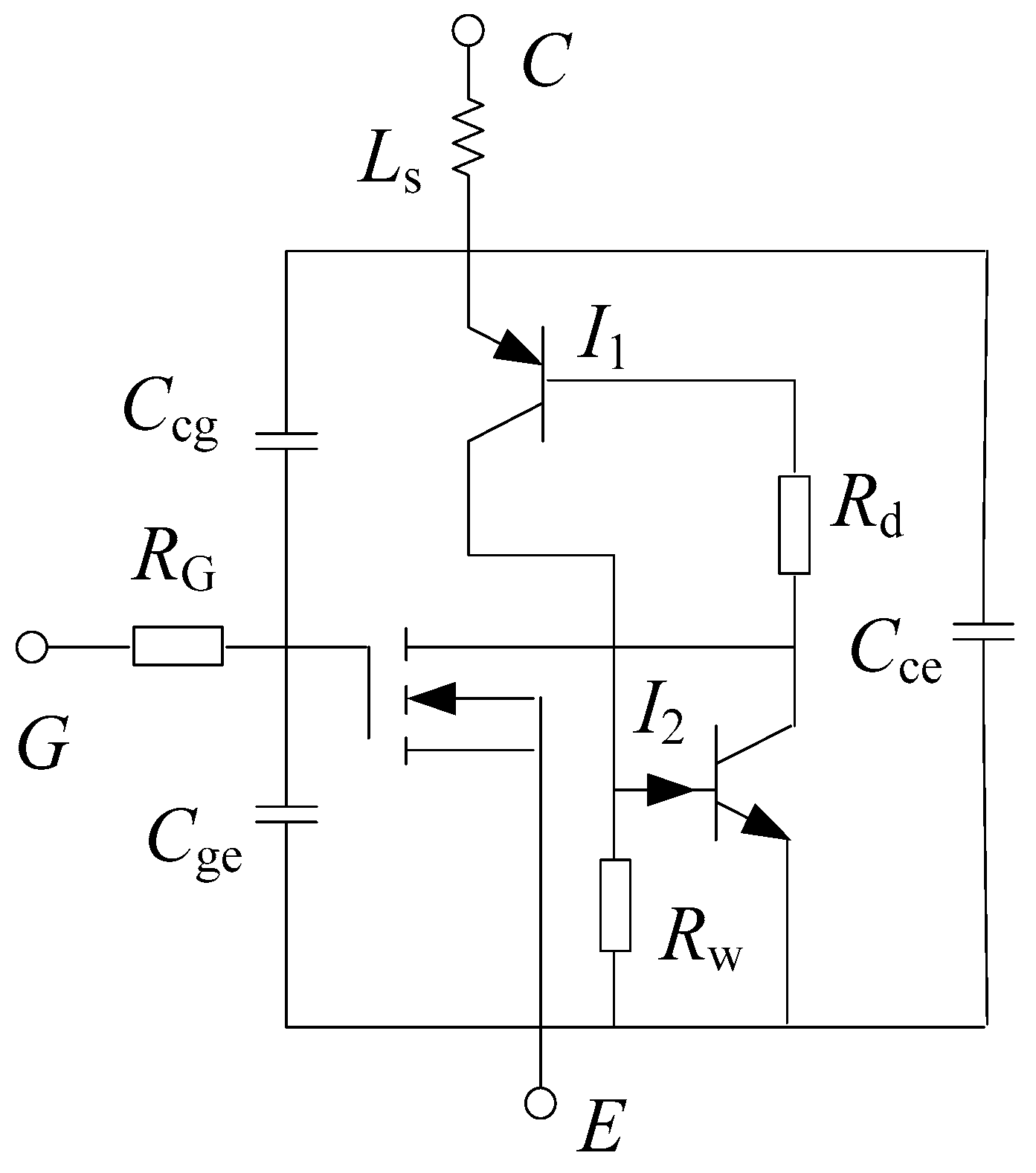


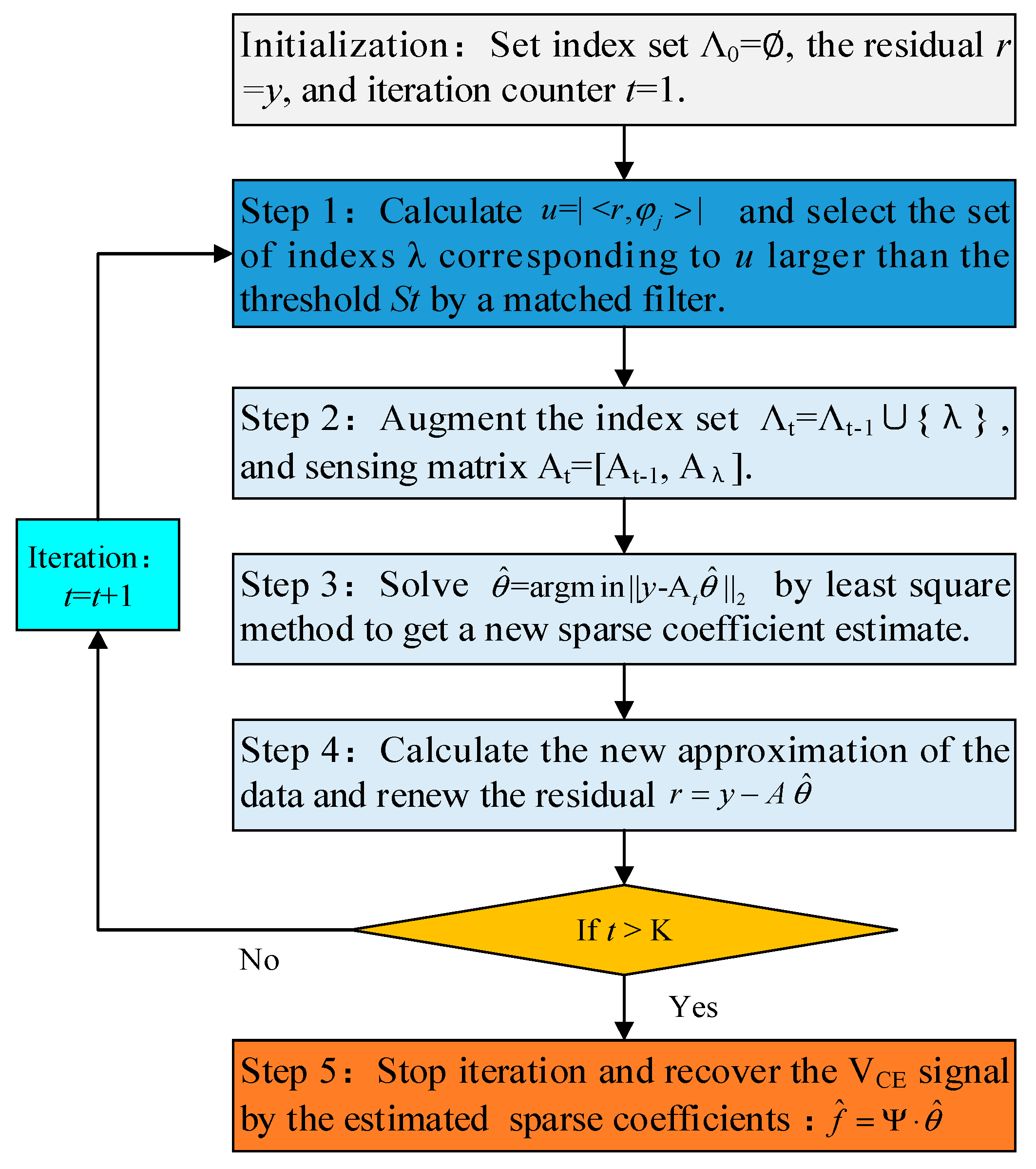


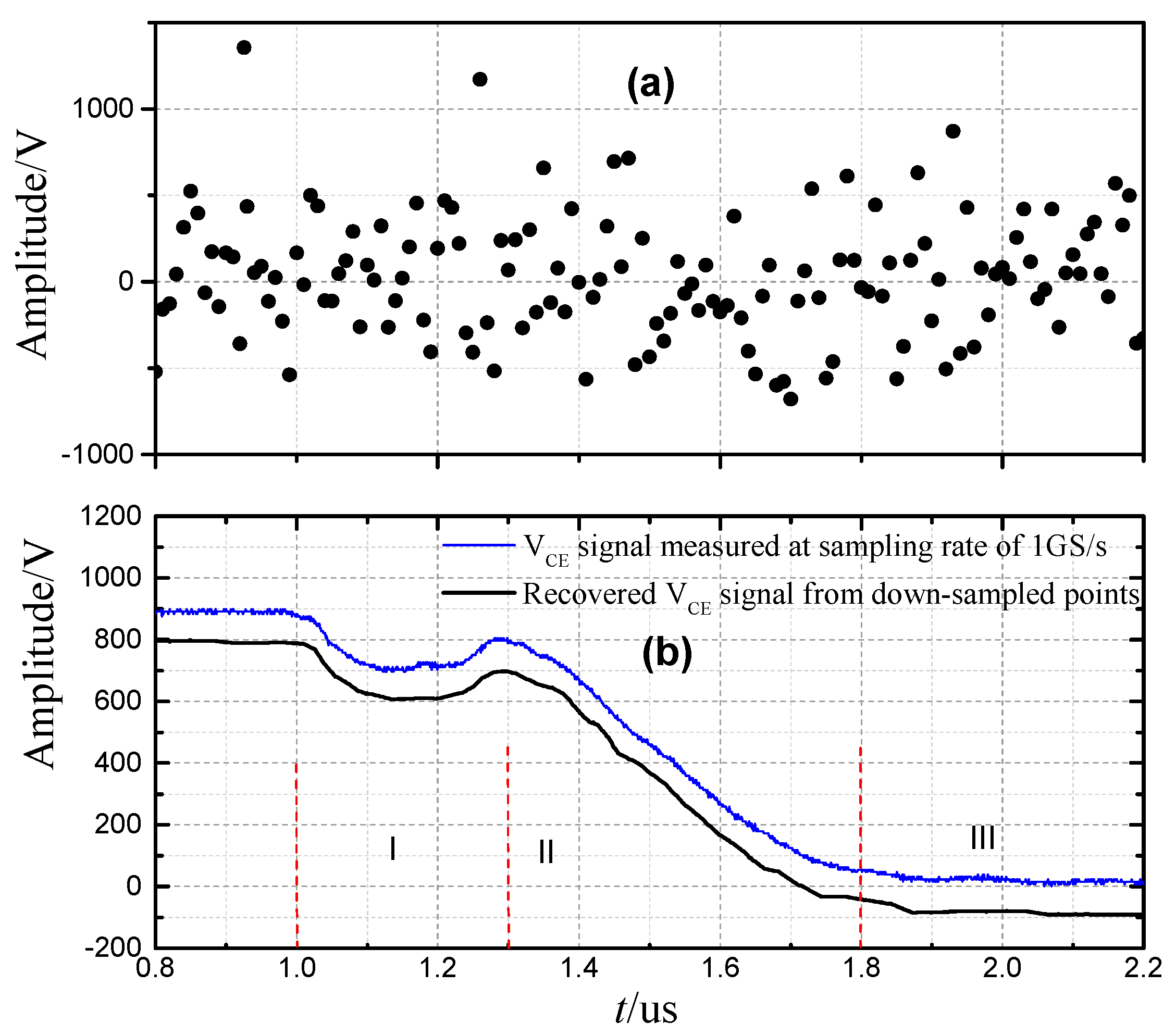


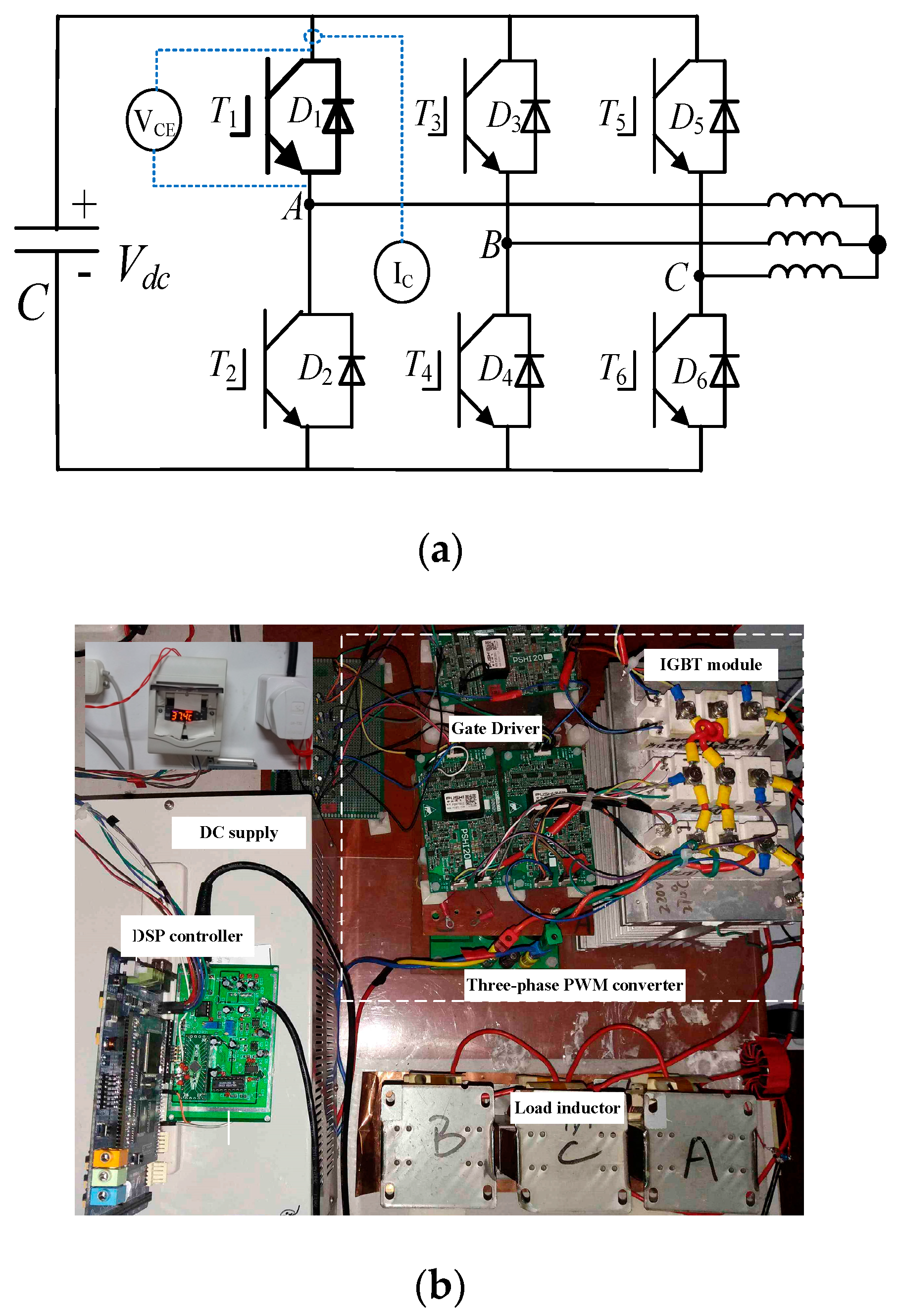

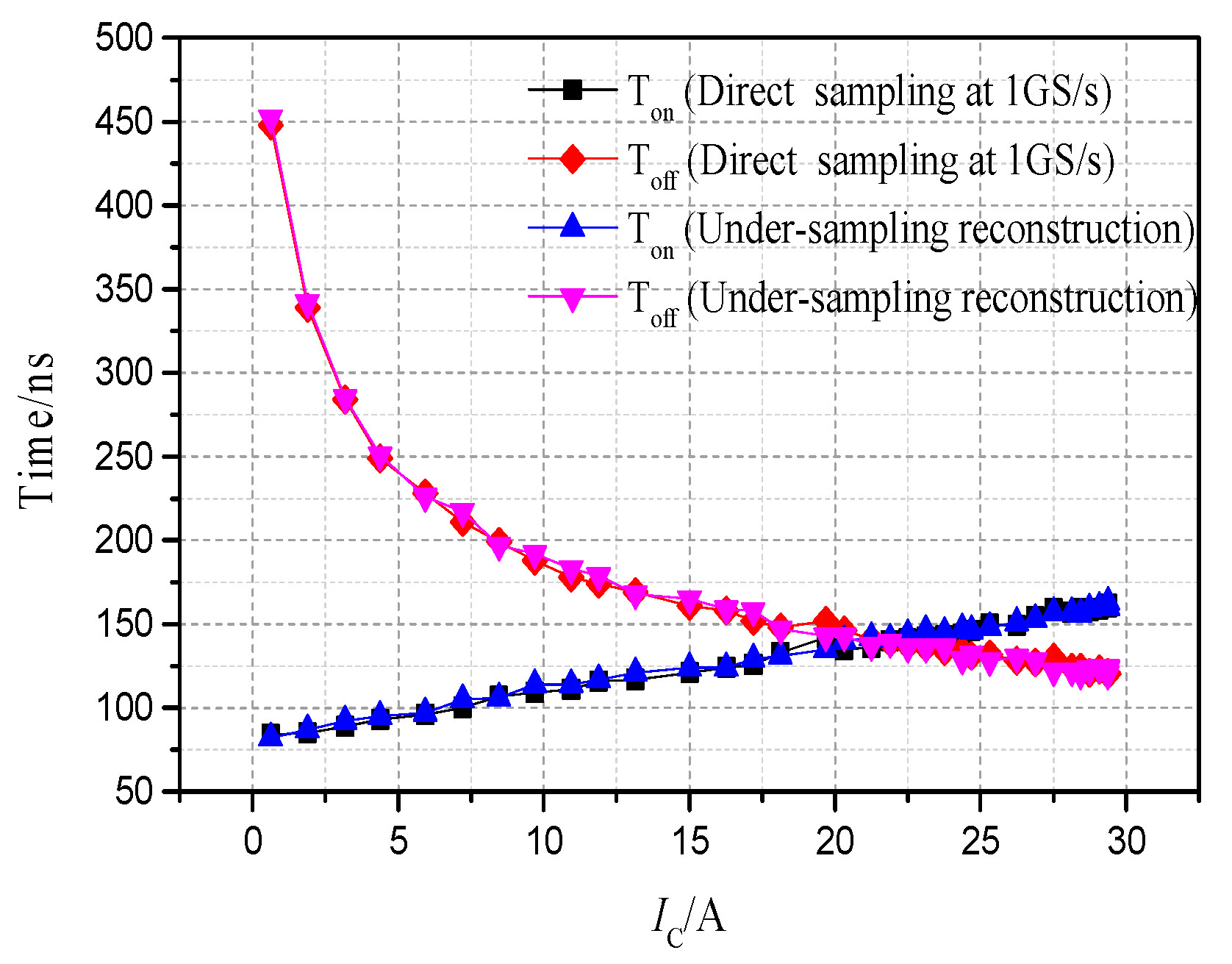
| Random Measurement Matrix | Reconstruction Error C¬e | |
|---|---|---|
| Gauss matrix | 1.35% | 0.76% |
| Bernoulli matrix | 1.22% | 0.85% |
| Partial Hadamard matrix | 2.01% | 0.77% |
© 2019 by the authors. Licensee MDPI, Basel, Switzerland. This article is an open access article distributed under the terms and conditions of the Creative Commons Attribution (CC BY) license (http://creativecommons.org/licenses/by/4.0/).
Share and Cite
Li, H.; Zhao, M.; Yan, H.; Yang, X. Nanoseconds Switching Time Monitoring of Insulated Gate Bipolar Transistor Module by Under-Sampling Reconstruction of High-Speed Switching Transitions Signal. Electronics 2019, 8, 1203. https://doi.org/10.3390/electronics8101203
Li H, Zhao M, Yan H, Yang X. Nanoseconds Switching Time Monitoring of Insulated Gate Bipolar Transistor Module by Under-Sampling Reconstruction of High-Speed Switching Transitions Signal. Electronics. 2019; 8(10):1203. https://doi.org/10.3390/electronics8101203
Chicago/Turabian StyleLi, Hao, Meng Zhao, Hao Yan, and Xingwu Yang. 2019. "Nanoseconds Switching Time Monitoring of Insulated Gate Bipolar Transistor Module by Under-Sampling Reconstruction of High-Speed Switching Transitions Signal" Electronics 8, no. 10: 1203. https://doi.org/10.3390/electronics8101203
APA StyleLi, H., Zhao, M., Yan, H., & Yang, X. (2019). Nanoseconds Switching Time Monitoring of Insulated Gate Bipolar Transistor Module by Under-Sampling Reconstruction of High-Speed Switching Transitions Signal. Electronics, 8(10), 1203. https://doi.org/10.3390/electronics8101203





